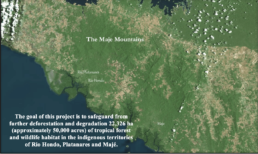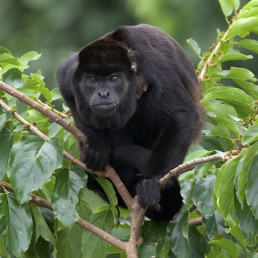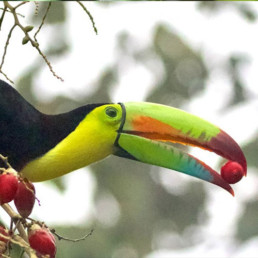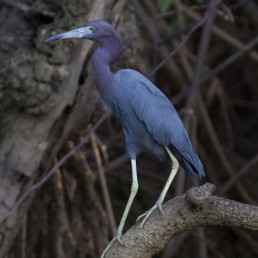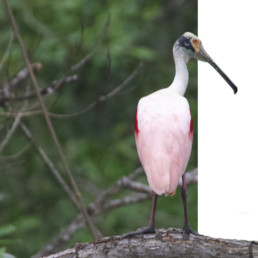Location
Eastern Panama from the Pacific ridge of the Majé Mountains (1,432 m elevation) down to the mangrove forests of the Panama Bay Wildlife Refuge (Refugio de Vida Silvestre Humedal Bahía de Panamá).
Goal
To conserve species and habitats within the forested and riparian habitats of three Wounaan Indigenous territories.
Project Field Partner
Native Future is a non-profit organization rooted in Peace Corps service, conservation, Indigenous rights, and the dedication of many volunteers. They partner with Indigenous communities in Panama to protect their land rights, support the stewardship of their rainforest ecosystems, and youth education.
Size of Area Involved
22,326 hectares (223 km2)
Uncovering New Species in the Heart of Wounaan Indigenous Lands
Wounaan Indigenous territories harbour intact forest and species already extirpated outside this region. They lie within the Majé Mountain range, which extends 60 km and has some of the highest biodiversity in the world, from its mountain tops to the Pacific coast. The landscape is the winter home to at least 65 Neotropical migratory bird species, including the Prothonotary and Canada warblers and support globally threatened species such as the Great Green Macaw, Harpy Eagle and Great Curassow. Research in the eastern-most highland of the range, the Chucantí Reserve (established with support from our sister NGO the ICFC), indicate a high level of endemism and has uncovered new species, including: a Staghorn Beetle, a Lungless Salamander, a Centipede Snake, Anthurium (a plant), a Heliconia plant, a Pierid butterfly, a climbing rat and a beetle.
Threats:
Outside Wounaan territories, forests are being logged and cleared for cattle ranching and farming at one of the highest rates in Panama and there has been widespread destruction of coastal mangroves. With access from the Pan American Highway, settlers have cleared 40% of the land in eastern Panama. The remaining forest – starkly seen from satellite imagery – is found in national parks and Indigenous territories, including Indigenous territories still without legal recognition like Rio Hondo, Platanares and Majé.
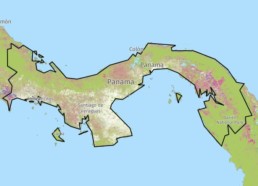
Map found on globalforestwatch.org Map data © 2024 Google © Mapbox © OpenStreetMap
Wounaan communities defending their borders
Native Future works with Wounaan communities to protect their traditional lands from the Majé Mountains to Panama Bay. A successful strategy led by the Wounaan has been a game-changer: it combines live satellite monitoring, border monitors, drone operators, and legal representation.
This has led to documented illegal incursions and ecological damage being brought before the Panamanian government and then into the courts. As of February 2023, 21 individuals have been “denounced”, three have been convicted and await sentencing, and two government officials have been removed from their positions for suspected malfeasance. These outcomes, the result of two years’ work, are unprecedented in the history of Wounaan territorial defense. The work is far from done but the tide has turned.


